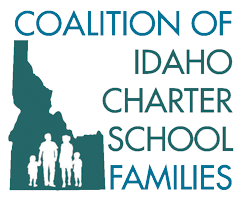New School Choice Bill H93, Set to complete the School Choice Package in Idaho
/More education choices for parents.
Why H 93 Matters: A Game-Changer for School Choice in Idaho
As parents, we all want what’s best for our kids. Whether it’s the right pediatrician, the best extracurricular activities, or the perfect school, we are constantly making choices that shape their futures. But when it comes to education, the options aren’t always as accessible as they should be. That’s where House Bill 93(H 93) comes in—a proposal that puts power back in the hands of parents and expands educational opportunities for Idaho families. With the Governor’s Empowering Parents grants providing resources for public school students, H 93 completes the school choice package by ensuring non-public school students also have access to financial support. This means that now, every single child in Idaho—whether enrolled in traditional public school, public charter school, public virtual school, private virtual school, private school, or homeschool—will have resources available to support their education.
Parents Know Best
The intent of this legislation is simple: Parents—not the government—are best suited to decide how and where their children are educated. Every child is different, and a one-size-fits-all approach to education just doesn’t work. H 93 recognizes that reality and provides families with the flexibility to choose the best educational path for their children.
A Refundable Tax Credit to Help with Education Costs
Starting with the 2025 tax year, Idaho families would be eligible for a refundable tax credit to help cover qualified education expenses. This means parents could receive a direct benefit—up to $5,000 per student—to offset the cost of tuition, tutoring, curriculum, or other necessary expenses. Families of students with disabilities could receive up to $7,500 to help provide the additional support their children need.
Who Qualifies?
The program is designed to be as inclusive as possible while ensuring funds are prioritized for those who need them most. An eligible student is any full-time Idaho resident between the ages of 5 and 18, and students with disabilities up to age 21. The tax credit is only available for students not enrolled full-time in public school, reinforcing that this program is meant to expand school choice, not compete with public schools.
What Expenses Are Covered?
The range of qualified expenses is broad, giving parents flexibility in how they choose to educate their children. These expenses include:
Tuition and fees for nonpublic schools
Tutoring and supplemental instruction
College prep costs like SAT, ACT, and AP exams
Textbooks and curriculum for homeschool or private education
Transportation costs related to education
To ensure quality education, students must receive instruction in English, math, science, and social studies.
How Does It Work?
Parents can choose to receive the funds upfront through an advance tax credit payment or get the benefit when filing their taxes. Applications will open every January 15th for 60 days, and parents will be notified of approval within 30 days after the application period closes.
For those who opt for advanced payments, funds will be distributed 60 days after approval. Families who do not apply during the initial window will still have opportunities, as long as funds are available, with a final cutoff date of August 15th.
Ensuring Fair Access
While all parents are eligible, families below 300% of the Federal Poverty Level will receive priority to ensure that lower-income households have a fair shot at accessing quality education. After the first year, families who previously received the credit will have first priority, followed by new applicants under the income threshold.
Built-in Accountability & Transparency
To ensure the program remains fair and effective, several accountability measures are in place:
Fraud Prevention: Misuse of the funds is taken seriously, with violations punishable as felony tax fraud.
Transparency: The Idaho Tax Commission will publish updates on total credits claimed and remaining funds.
Data Reporting: A detailed report will be submitted each year to the Governor and Legislature, tracking the number of applicants, amounts awarded, and geographic distribution of funds.
Education Standards: Private schools must be accredited, and parents who homeschool or use alternative education models must maintain an education portfolio demonstrating student learning.

